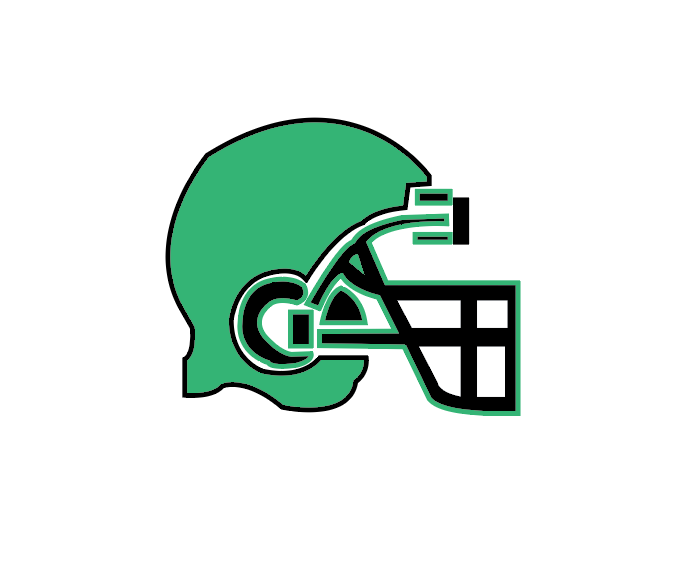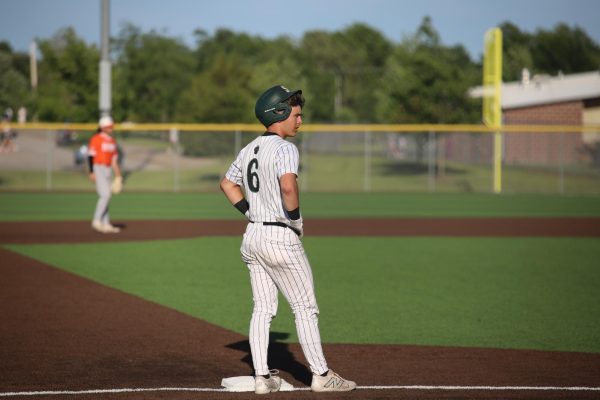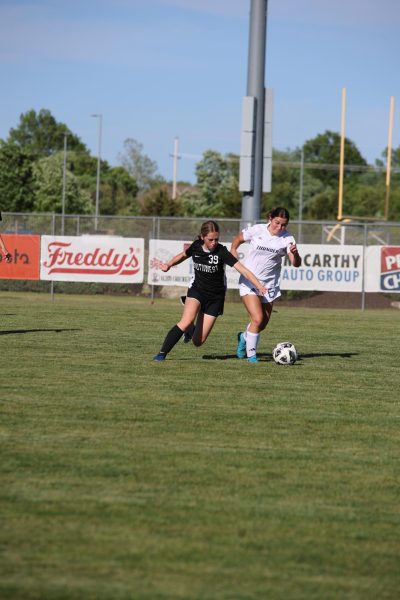Repercussions of Concussions: Number of reported concussions continues to increase, affecting students across all sports
Concussions have become a major issue in high school sports, with football and girls soccer leading the way, according to the Kansas State High School Activities Association. But even with increased attention around concussions, athletic trainer Chris Poskey said many students still don’t understand the implications brain damage can have.
“If your brain is not functioning at the level it needs to be functioning at, then you need to take some breaks, take some rest and let that heal properly,” Poskey said.
Senior Andrew Skouse, who has experienced four concussions (three in football and one in baseball), said he cannot remember one of his concussions, but on the other three occasions, he had a minor headache that continued to worsen.
“I didn’t think it was that bad,” Skouse said. “You know, it’s football, you get banged up, but eventually as it went on, I told the coaches my head was hurting.”
Poskey said there is a multi-step process that every athlete must complete if concussion symptoms are present.
“Do they have a headache? Do they have dizziness? Do they have nausea? Ringing of the ears? Any vision problems? Different things like that,” Poskey said. “And then on top of that you’re looking to see [if there] is a memory issue that might be affected, is there a balance issue that might be affected — we’re looking at all of these things in combination.”
Junior Katie Charest, who has had three concussions in dance, said she immediately knew she had a concussion when she hit her head on the floor.
“All of a sudden the world just started spinning and I had no idea where I was,” Charest said. “I immediately knew I had another concussion, there was no doubt about it.”
After it is determined that the athlete does indeed have a concussion, Poskey said a return to play program is initiated.
“[The] first couple of days are easy cardio, maybe a little bit of lifting weights and by the fourth or fifth step, it’s returning to a full practice, full contact practice and a full game from there,” Poskey said.
Concussions are often associated with sports, but the effects of a concussion reach far into the classroom, as well.
“The nurse was very willing to work with me; she’d let me come into her office and just lay down in the dark, and a lot of my teachers worked with me to make everything up,” Charest said.
Even years after suffering concussions, students still deal with the long-lasting damage to the brain.
“My memory’s pretty bad now. It’s hard for me to remember short-term stuff on my own,” Skouse said. “If someone reminds me then I’m alright, and if I run it through my brain a lot then I’m alright, but if it’s something that just happens and I need to know it, I sometimes forget.”
Along with memory loss, other less obvious symptoms may linger well beyond the actual time-frame of the concussion.
“I experience lots of symptoms of dizziness randomly,” Charest said. “It will just come out of nowhere or I’ll just be sensitive to light one day. Or I’ll start seeing spots — it just comes out of nowhere.”
One of the most important things to remember is that brain injuries should take priority over the current sport season, and there are many steps medical professionals can take to help the brain.
“If you’re sustaining repeated concussions — four, five, six, somewhere along those lines —you’re going to have a conversation with your doctor, with your athletic trainer, whomever it might be, and we are going to discuss probably getting you out of some sports and getting you away from those situations where you might be hit in the head,” Poskey said.
Charest said she is much more cautious and aware of her surroundings when she dances now.
“I know my brain will never be 100%,” Charest said. “I was told that if I get another concussion, my brain will be permanently affected, so I have a big fear of getting another one because that’s scary.”
Poskey said it is important to understand that reporting concussion symptoms, while allowing time to heal, is critical.
“You only have one brain,” Poskey said. “I tell people when they get a concussion you’ve got two arms, you can write left handed if you break your right arm, but if you continue to injure your brain, there’s only so much we can do for you.”










